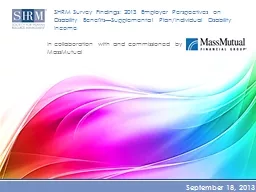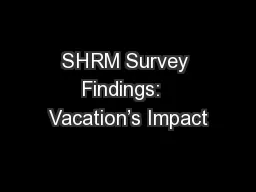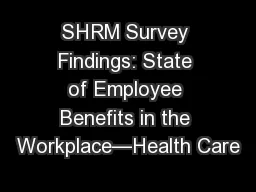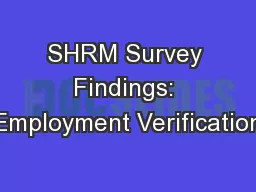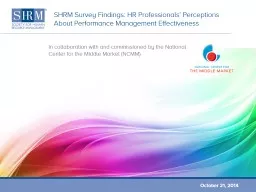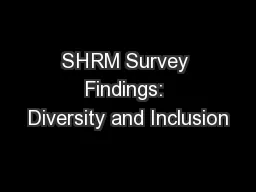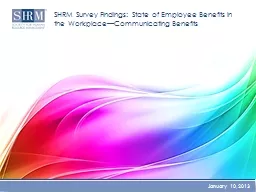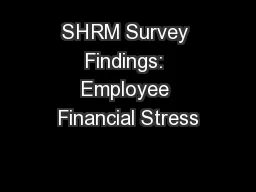PPT-SHRM Survey Findings:
Author : celsa-spraggs | Published Date : 2019-11-08
SHRM Survey Findings 2013 Employer Perspectives on Disability Benefits Supplemental PlanIndividual Disability Income In collaboration with and commissioned by MassMutual
Presentation Embed Code
Download Presentation
Download Presentation The PPT/PDF document "SHRM Survey Findings:" is the property of its rightful owner. Permission is granted to download and print the materials on this website for personal, non-commercial use only, and to display it on your personal computer provided you do not modify the materials and that you retain all copyright notices contained in the materials. By downloading content from our website, you accept the terms of this agreement.
SHRM Survey Findings:: Transcript
Download Rules Of Document
"SHRM Survey Findings:"The content belongs to its owner. You may download and print it for personal use, without modification, and keep all copyright notices. By downloading, you agree to these terms.
Related Documents

